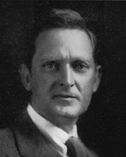


|
Membership Type:
Member
(elected 1924)
|
 Copyright © 2024 National Academy of Sciences. All rights reserved.
Privacy Statement | Institutional Policies and Procedures | Terms of Use
Copyright © 2024 National Academy of Sciences. All rights reserved.
Privacy Statement | Institutional Policies and Procedures | Terms of Use
